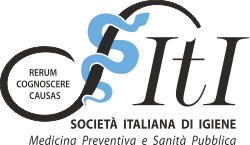These vaccines are administered as a primary cycle in the first year of life, in a single vaccine called hexavalent.
These vaccines also exist as separate preparations, but they are generally administered, as a primary cycle in the first year of life, in a single vaccine called the hexavalent vaccine, as it contains parts of all six germs (absolutely incapable of causing the disease, but sufficient to trigger the body's defences) in a single syringe (ie a "combined" vaccine). A combined vaccine is as effective and safe as separate vaccines but enables the child to be protected with a single injection.
Administering multiple vaccines at the same time is not dangerous for the child. The vaccine is administered intramuscularly in the thigh.
When to vaccinate
The current vaccination schedule includes the use of the hexavalent vaccine as follows:
- the first dose in the 3rd month of life
- the second dose in the 5th month of life
- the third dose in the 11th-13th month of life
With regard to hepatitis B and Haemophilus influenzae type B, the cycle is complete and no further dose is required. A booster dose for Diphtheria-tetanus-pertussis and Polio is expected at 5-6 years of age. During adolescence, an additional, reduced dose of Diphtheria-tetanus-pertussis (and possibly polio) is recommended to maintain adequate protection. A diphtheria-tetanus-pertussis booster is recommended for adults every 10 years.
Who should not be vaccinated
A child should not be vaccinated if he has a severe allergy to any component of the vaccine or has had a severe allergic reaction to a previous dose of the vaccine.
When to postpone vaccination
Children with mild illnesses (such as a cold) can generally be vaccinated safely. If, on the other hand, they have moderate or severe illnesses, it is advisable to delay vaccination until they have recovered.
Vaccination risks
Like any other drug, vaccines can cause side effects. In most cases, these are mild reactions limited to the injection site (redness and swelling) and fever is possible. These problems occur in about one in four children, usually appearing within 24 hours of vaccination and can last for 1-2 days. Much more rarely, severe reactions (such as severe allergic reactions) may occur. However, the risk of any vaccine causing serious harm or death is extremely low.
It is much more dangerous for a child to contract the disease than to be vaccinated.



